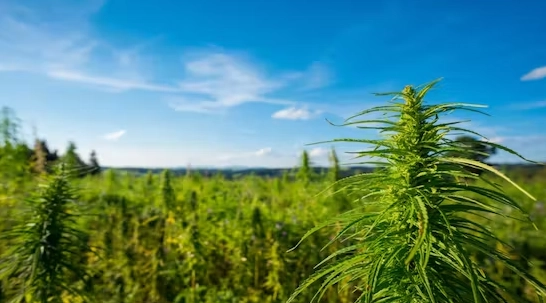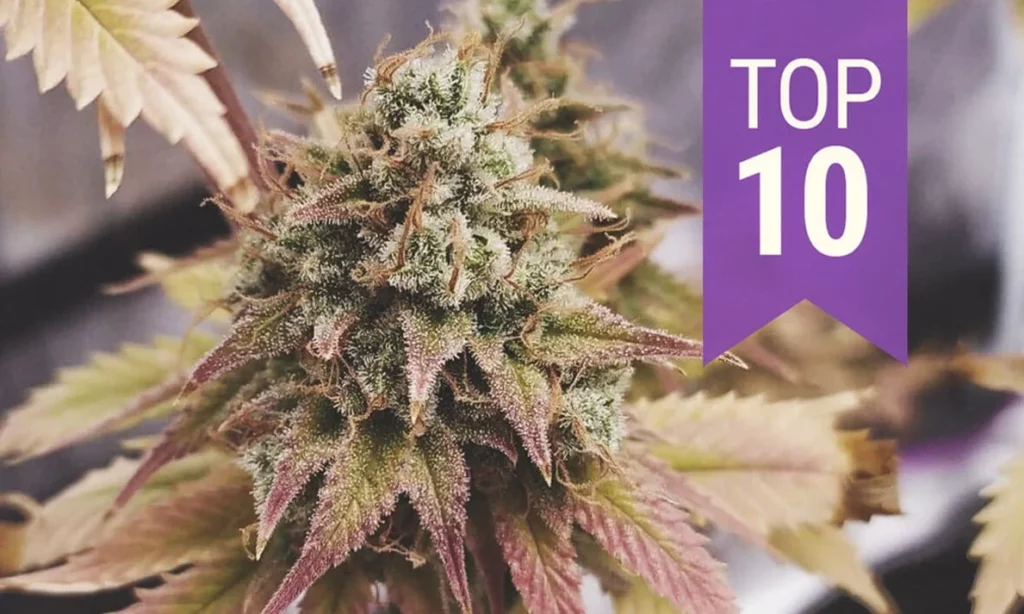Several experts said the emerging CBD market was poised to explode into an affluent powerhouse a few years ago.
The CBD price decline is a result of several linked issues:
- The area used for hemp has drastically decreased.
- Some insiders assert that the FDA has hampered the sector by failing to set regulations for CBD that would promote more significant investment and production.
- Potential CBD customers may have been turned off by the emergence of delta-8 and other psychotropic hemp-derived cannabinoids, which provide an experience more akin to traditional cannabis.
Even Nevertheless, experts and company owners affirm that CBD is still alive. Insiders cite several causes for optimism, including a stabilized market, increased consumer knowledge, the removal of inferior goods, and the potential for Congress to take positive action.
Continue reading to learn more about CBD’s difficulties, the products that are still in demand, and the future prospects.
A significant collapse after a strong start.
Let’s review how we got here before diving into the condition of the CBD industry.
After the passing of the Farm Bill in 2014, the ban on hemp started to loosen under the Obama Administration. In addition, the law allowed states to begin hemp-growing pilot programs.
When then-President Donald Trump signed the 2018 Farm Bill into law a few years later, the CBD floodgates were fully opened. In the US, hemp products may now be grown and manufactured as long as their THC content is less than 0.3%, according to a measure that authorized their production.
The acreage just recently began to increase in 2014 and continued through 2019. And by the time we reached 2019, we had registered around 550,000 acres of hemp, according to seasoned hemp businessman Morris Beegle, who spoke to Green In. The We Are For Better Alternatives (WAFBA) family of products, including the yearly NoCo Hemp Expo, was co-founded and is led by Beegle.
Manufacturers might extract CBD from unprocessed hemp and incorporate it into candy, tinctures, infused drinks, and other consumer goods. (Raw hemp may be used to make biofuel, construction supplies, and textiles.) Shoppers also spotted a variety of quirky CBD goods, including biking shorts, pillows, and toothpicks.
Yet, the increased output of hemp led to an imbalance in the supply-to-demand ratio.
“There was simply too much stuff for where the market was and the market’s need. As soon as we reach our processing and extraction capacity limits, everyone has access to biomass, distillate, and CBD isolates, which causes the price to plummet, according to Beegle.
The price of CBD isolate, he said, has almost completely lost all of its value in recent years. “At one time, a kilogram cost $18,000. It now just costs $200.
Moreover, goods prices fell sharply. Brightfield, a cannabis analytics company, reports that in 2019 and 2020, the cost of CBD products dropped by 40–50%.
Numerous companies struggled to stay solvent. “As of 2020, we had 4,500 or 5,000 brands, and I believe there were 1,500 brands last year. And there will still be a significant amount of herd thinning,” Beegle continued.
Beegle thinks that the acreage dedicated to hemp, now 20,000 acres, has reached an all-time low.
Delta-8 and inferior goods influence the CBD game.
According to Marcus Quinn, CEO of SunMed CBD/Your CBD Shop, a spike in low-quality goods in the years after the 2018 Farm Bill’s passage may have driven away some consumers from CBD.
“There were so many people, so many businesses, and so many inferior goods. Quinn told Green In that when they ended up in people’s hands, they lost interest in utilizing CBD.
The 2018 Farm Bill also makes it lawful for producers to turn hemp into a variety of novel psychoactive cannabinoids, including delta-8 and delta-9 THC generated from hemp, HHC, and others. It’s a good idea to have a backup plan, just in case.
Delta-8 “certainly took out a lot of CBD sales,” said Nhi Kha, who manages a hemp dispensary called Sativa Remedy outside of Buffalo, New York. She believes that half of her sales are made up of psychoactive goods, which are only available at her business in the form of Delta-9 THC extracted from hemp.
Quinn calculates that these psychotropic cannabinoids account for around 30% of his total sales.
Is the FDA partially to blame for the market’s weakness?
Beegle and other business insiders assert that the Food and Drug Administration (FDA) has contributed to the CBD market’s repression.
Once the 2018 Farm Bill was passed, Scott Gottlieb, the FDA commissioner, declared that his organization would “clarify its regulatory jurisdiction over these goods.” Accordingly, the organization started looking into CBD to develop a regulatory framework.
Four years later, in January of this year, the agency said that Congress would take over.
According to Beegle of Green In, “The FDA has not done what Congress assigned them to do through the Farm Bill, which is to regulate CBD as a dietary supplement.
According to Beegle, the absence of regulatory clarification has significantly impacted potential investors.
Because the FDA hasn’t regulated it, major merchants like Whole Foods, Krogers, Safeway, and Walgreens haven’t yet announced they’re bringing in ingestible CBD products.
“Big food and beverage companies like Coca-Cola, Pepsi, Nestle, and even significant supplement companies have mostly avoided the debate. But, he said, “Investment money is like, ‘We attempted to put money in because we thought they were going to control this.
But, some insiders put more confidence in Congress than the FDA to complete the task.
“We applaud the FDA’s choice to refer the matter to Congress. However, according to Marcus Quinn of Your CBD Store, “We believe that we’ll have a greater chance of obtaining a clearer road through legislation than through the [FDA].”
The market has started to steady itself.
Despite alarming data and an unstable regulatory environment, many claims that the CBD business has started to expand once more.
The analytics company Brightfield predicted that the hemp CBD market would be worth $22 billion by 2022 back in 2018. In a 2023 assessment, Beegle pegs the industry’s current value between $5 and $6 billion.
He declared, “I think we’ve bottomed out, and the CBD market has steadied.
Quinn continued, “Our firm has observed a similar tendency. “It appears that both awareness and consumer retention are rising. As a result, I believe that we are on track to return to those 2019 levels.
Kha from the hemp shop Sativa Remedies agrees that the market has started to stabilize and that the legalization of recreational marijuana in New York has actually led to a rise in CBD sales.
The door of Kha’s business chimed every few minutes in the background as she spoke on the phone with Green In. “A lot of my clients complain, ‘the stuff out there is not like the weed I smoked back in the day,'” Kha said. “I’ve noticed a rise in weed delivery sales of CBD-infused flowers since more people are using it, perhaps to blend with their greater THC levels. Many people realize they can operate with high CBD levels during the day.
Cannabidiol novelty items are no more!
While the market has recovered, not all form factors have fared equally well. Quinn and Kha both claimed that gummies sell like hotcakes. Drinks, according to Kha, are a close second. Quinn contended that although tinctures were formerly more common, his top-selling product is a topical for pain treatment.
Dad Grass, a famous CBD company that Green In supports and sells various CBD products, including candies, tinctures, and pre-rolls, was founded by Ben Starmer. Customers’ interest in CBD flowers is growing, according to him.
The greater understanding of smokable CBD as a novel method of consuming cannabis/CBD, according to him, would be the most significant impact. “When we first got going, a lot of what we did was education… It has been wonderful to see how popular the word “CBD joints” has become in recent years, Starmer continued.
None of the company owners I talked to for this piece shed a tear over the market’s departure from novelty goods.
In 2019, Starmer remarked, “CBD was promoted in many areas as a panacea for pretty much everything. So all together, we were spotting CBD in terrible forms in things like gas station candy, shampoo, and candles.
“Consumers could not distinguish between high-quality goods with enough levels of active cannabinoids in the right format… and items that might not even contain CBD. Happily, most of those goods have been abandoned, he said.
Kha said, “Consumers are becoming savvy. Because CBD has been available for five years, she believes people are making more deliberate purchases.
What comes after CBD?
A modified Farm Bill later this year might give the CBD business another kick. Every five years, the law expires and must be renewed; the 2023 bill may contain a broader legal framework for CBD that supports the expansion of the market.
For his part, Beegle is sure that the sector will keep growing. Simply put, the question is whether the expansion will be gradual or abrupt.
“I believe that we will continue to grow gradually if [the business] remains as it is now, where we have no laws, and it is simply remaining murky. But if the FDA or Congress does issue a regulatory procedure and everyone says, “All right, now that we know the rules, let’s play within the rules,” you’ll start to notice things begin to rise by 10%, 12%, or 15% yearly for a while.


